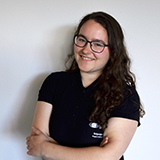 “Medical education used to be something that was done to students, rather than something they were a part of,” said Trudie Roberts, professor of medical education, during a AMEE board meeting. But things have changed. Nowadays, the concept of involving students in the design, development, and evaluation of medical education is well accepted in many countries.
“Medical education used to be something that was done to students, rather than something they were a part of,” said Trudie Roberts, professor of medical education, during a AMEE board meeting. But things have changed. Nowadays, the concept of involving students in the design, development, and evaluation of medical education is well accepted in many countries.
The involvement of patients on the other hand, is still limited. Patients mostly remain the subject of study, enabling students to practice physical examination. Or they are invited to tell their personal stories in lecture halls. What they are often not invited to do is get involved in the strategy and approach of medical education. The expertise that patients can bring to many areas of education continues to be an untapped resource (Tuckett 1985).
As medical students and as future physicians we are accountable to the communities that we serve (WHO 1995). Social accountability in medical schools is about responsibility, not only willingness, to react to current and future health needs and challenges in society. A socially accountable medical school strengthens governance and partnerships with other stakeholders, including patients, to make that happen (Global Consensus on Social Accountability of Medical Schools, 2010).
Towle et al describe a spectrum of patient involvement. This ranges from being a “paper-based case” or a standardized patient, to sharing experiences within a faculty-directed curriculum. Further, there are “patient-teachers” who are involved in evaluating students, to patient-teachers as equal partners in education, evaluation, and curriculum development. Finally, patients can be involved at an institutional level. The level of participation increases with each of these steps, whereas many involvement-initiatives are confined to the bottom of the staircase.
Patients themselves seem highly motivated to participate in education. Some see their involvement as their responsibility, as a way of “giving back” (Watts et al. 2014; Bashour et al. 2012). Some become involved as they feel that their view is unheard, or believe their experiential knowledge of illness and the health system is unjustly absent in the curriculum (Tew et al 2011; Towle et al. 2009). Others see their participation as an opportunity to improve their own knowledge (Watts et al. 2014).
This is reflected in the increase in initiatives to involve patients in medical education in the UK. National guidance documents such as Tomorrow’s Doctors and “supplements on patient and public involvement in undergraduate medical education” (GMC 2009; 2011) and the White Paper “Equity and excellence” (NHS 2010) have explicitly advocated for patients’ involvement in health professionals education.
The challenge is to make patient’s involvement meaningful. It has become a trend, sometimes even a status symbol, to involve other parties in decision making, including students or patients. But symbolic efforts to include under-represented groups fail to achieve change. There are, however, useful examples of meaningful partnerships from which others can learn. In an extensive guide on meaningful student involvement for school change, Adam Fletcher describes crucial elements for partnerships, and provides examples of meaningful and non-meaningful involvement (Fletcher 2003).
As physicians we need to be aware that we do not necessarily have all the answers, and recognize that patients as those who experience the outcomes of our medical education and health care system have knowledge in many areas that we do not.
Through organisations such as the International Federation of Medical Students’ Associations (IFMSA), medical students attempt to gain the experiences and knowledge that they feel their own curricula and faculties are missing themselves. They advocate and set up projects and initiatives not only for patients, but with them, where the goals are determined together with individual patients or local and global patient organizations.
In the time of Abraham Flexner (1910), patients were referred to as “clinical material”. It is not acceptable for this way of thinking to still linger through our educational system. There is need for strategic, systematic, institution-wide approaches to planning patient, student, and community involvement in non-tokenistic manners in all levels of medical education, developing a culture where this is the norm. The best way to inspire shared-decision making, and to teach us to respect our patients, is not by telling us students the importance of values through lectures, it is by leading by example.
Acknowledgement: I would like to thank Matthias Wienold (patient advocate) and Tessa Richards (leading the BMJ patient partnership initiative) for their continuous support and their review of this article.
